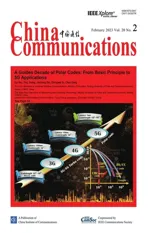Research on Network Cognition Model and Mechanism of Intelligent Information Network
2023-03-12NannanDongHaoYinBaoquanRenHongjunLiXiangwuGongXudongZhongJunmeiHanJiazhengLyu1
Nannan Dong,Hao Yin,Baoquan Ren,Hongjun Li,Xiangwu Gong,Xudong Zhong,Junmei Han,Jiazheng Lyu1,
1 College of Intelligent Systems Science and Engineering,Harbin Engineering University,Harbin 150001,China
2 Institute of Systems Engineering,AMS,PLA,Beijing 100000,China
Abstract: Intellectualization has been an inevitable trend in the information network,allowing the network to achieve the capabilities of self-learning,selfoptimization,and self-evolution in the dynamic environment.Due to the strong adaptability to the environment,the cognitive theory methods from psychology gradually become an excellent approach to construct the intelligent information network(IIN),making the traditional definition of the intelligent information network no longer appropriate.Moreover,the thinking capability of existing IINs is always limited.This paper redefines the intelligent information network and illustrates the required properties of the architecture,core theory,and critical technologies by analyzing the existing intelligent information network.Besides,we innovatively propose a novel network cognition model with the network knowledge to implement the intelligent information network.The proposed model can perceive the overall environment data of the network and extract the knowledge from the data.As the model’s core,the knowledge guides the model to generate the optimal decisions adapting to the environmental changes.At last,we present the critical technologies needed to accomplish the proposed network cognition model.
Keywordst: intelligent information network; network cognition; multi-domain perception; network knowledge
I.INTRODUCTION
Intellectualization has become an important research direction of future information networks [1],satisfying new demands such as the intelligence of future network elements,network connection,network service,network management,etc.The approaches to implement network intellectualization can be classified by“Network+Intelligence” and “Network Intelligence+”.“Network+Intelligence”refers to utilizing artificial intelligence(AI)technology to optimize network performance from a partial perspective like intelligent management of network traffic,intelligent operation and maintenance of network service.By comparison,“Network Intelligence+”renovates the network architecture and key technologies with intelligent methods,aiming to improve the intelligence level of the whole network.Therefore,“Network Intelligence+” is the more effective approach to realize intellectualization from the inside out,which means the higher level.
1.1 State-of-the-Art Research
As the mainstream research of the “Network Intelligence+”,the intelligent information network (IIN)was first proposed by Cisco in 2003[2].Cisco has indicated that the IIN should satisfy the requirements of data integration and various business applications and have the properties of high reliability,high security,high efficiency,easy expansion,easy management.So far,a series of research on the IIN has been carried out,including network intelligence level evaluation,intelligent networks based on AI technology or cognitive theory methods[3,4],as shown in Figure 1.
The network intelligence is usually classified into five or six levels according to the degree of manual involvement.The highest level means autonomous operation without assistance.For example,the ZTE Corporation has divided the network evolution into five stages,providing a reference for the development of IIN[5].In addition,some international institutes like Experiential Networked Intelligence (ENI)have designed six-level standards to evaluate the intelligence level from different perspectives [6].Recently,the “IMT-2020 and Intelligence Level Evaluation of Future Networks” formulated by many operators has passed the deliberation of the International Telecommunication Union Telecommunication Standardization Sector(ITU-T),filling the gap of the network intelligence level evaluation in the telecom industry[7].
Under the guide of intelligence level,operators and organizations have constructed various IINs with AI technology,attempting to achieve the higher level of network intelligence.The American Telephone and Telegraph Company (AT&T) has designed the Network 3.0 Indigo to facilitate the construction of the data-sharing community with the technologies of big data and machine learning[8].China Mobile has proposed the JiuTian artificial intelligence platform to realize the large-scale industrial application of AI in each communication network link [9].Meanwhile,many enterprises have provided the intelligent center for the IIN by building the Internet brains,such as“Google Brain”,“JD Brain”,“Baidu Brain”,etc[10].While the mentioned research has enhanced the intelligence level of IIN to some extent,it is difficult to explain the optimization process of the network performance due to the AI technology without interpretability.
The cognitive theory methods can cover the shortage of AI technology when applied in the IIN because the methods derived from psychology can make the application object have the learning and reasoning ability.Thus,the IIN using the cognitive theory methods can interpret the optimization process of the network performance.For instance,in[11],the cognitive radio network referred to an intelligent adaptive network sensing,learning,and reasoning to control the radio.By the three steps,the network was able to illustrate the detail and reason of dynamic spectrum access.Ryan W.Thomas proposed the cognitive network having the cognitive process and learning capability,through which the network makes interpretable decisions[12].Since then,the cognitive network has received significant interest,and researchers have envisioned various cognitive networks [13—16].At present,the cognitive theory methods have become the primary and state-of-the-art approach to improving the intelligence of IIN.Driven by the cognitive theory methods,the future IIN needs to have the capabilities like a human,such as autonomous learning and thinking.Therefore,Cisco’s traditional definition of IIN is no longer suitable,which only focuses on optimizing infrastructure and satisfying the business requirements.Besides,although many cognitive theory methods can implement the IIN,the thinking capability of existing IINs is always limited.Because the current methods mostly regard the end-to-end performance of the network as the optimization goal,there is little research constructing an IIN with the network as the cognitive behavior subject and designing a mechanism to help IIN think like a human.
Knowledge Graph (KG) is a burgeoning intelligent technology that can construct logical relationships between concepts and entities [17].The relationships can help the subjects employing the KG think about the generation process of decisions.For example,the KG was applied to analyze and model the service quality demand and scene context from massive service instances in the 6G network [18].The network could produce rational allocation of resources while the comprehensive service-related knowledge was modeling,so the KG technology was supportive for improving the thinking capability of the network.
1.2 Contributions
To solve the outdated definition of the IIN,we combine the latest cognitive theory methods to update the definition.Furthermore,to overcome the limitation of thinking ability in the existing cognitive theory methods,this paper innovatively proposes the network cognition model to construct the IIN under the updated definition.Our original contributions are summarized as follows:
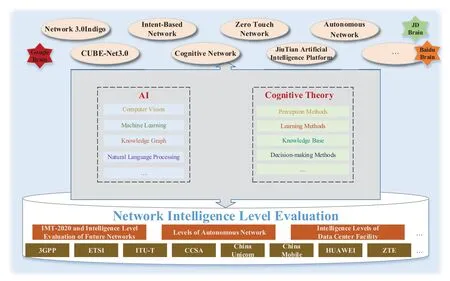
Figure 1.The main researches of the IIN.
1)The IIN is redefined by integrating the cognitive theory methods.The new IIN can take the entire network as the cognitive behavior subject,which helps the IIN acquire the autonomous capabilities of selflearning,self-optimization,and self-evolution.
2)The network cognition model is innovatively proposed by introducing KG technology to provide the reference for implementing the redefined IIN.The proposed model can obtain the network’s external and internal environment information with the various perceptive methods and analyze the information to produce knowledge by machine learning algorithms.Subsequently,the KG is applied to construct the correlation among the knowledge that includes the entire network and the overall environmental changes.At last,the proposed model can make comprehensive and explainable decisions to stabilize the network in the dynamic environment.
3) By directly embedding the proposed model,all network nodes can be intelligent agents.Each agent makes its own decisions and exchanges them with other agents in the form of knowledge to respond to environmental changes autonomously and promptly.On this basis,the cognitive behavior subject of the IIN constructed by the proposed model is the network,and the IIN achieves the capabilities of perceiving,learning,thinking,and interpreting.
The highlights of this paper include the updated definition of the IIN and the novel construction approach namely the network cognition model.The proposed new definition of the IIN indicates that the network is the subject of all actions,providing the principle for a higher level of network intelligence.The proposed network cognition model is a feasible approach to transforming the unintelligent network into the IIN and enhancing the intelligence level by being directly applied in the network nodes.The required functions of critical technologies in the proposed network cognition model are discussed to help the model work effectively and robustly.
II.BRIEF REVIEW OF THE IIN BASED ON COGNITIVE THEORY METHODS
Cognition refers to the process of acquiring knowledge through mental activities,including the formation of concepts,perceptions,judgments,and imagination,exclusively belonging to human intelligence.
Cognitive theory methods originating from psychology describe how the human brain makes decisions according to the environment changes,having been utilized by the U.S.Air Force to design the OODA(Observe,Orient,Decide,Act) cycle [12].The OODA cycle can simulate human behavior by controlling the subject by adapting to the external environment.As the extension of the OODA cycle,the OOPDAL(Observe,Orient,Plan,Decide,Act,Learn)cognitive cycle consisting of six units adds the planning and learning units to improve the intelligence level of the cognitive cycle[19].The cognitive cycle has been applied in the cognitive radio to realize the dynamic spectrum access,marking the formal application of cognitive theory methods in the communication field.Subsequently,many researchers have introduced the cognitive theory methods into the IIN,trying to achieve the higher intelligence level of the network,as shown in Figure 2.
The main applications of cognitive theory methods in the IIN can be classified by partial and centralized applications.The former employs the cognitive cycle to optimize the performance of certain functions like network resource management,operation and maintenance.There are typical researches belonging to the partial applications,such as the adaptive cognitive wireless network [20],the service-customized future network [21],the smart collaboration network [22],the reconfigurable fundamental information communication network[23].However,the intelligence level of the networks mentioned above is limited because the applied range of cognitive theory methods in the networks is narrow.
By contrast,the centralized applications regard the cognitive cycle as the core of the network architecture and key technologies,mainly containing the cognitive wireless network and cognitive network.After Motorola and Virginia Tech first proposed cognitive wireless network,the projects of next-generation(XG)and post-next-generation wireless network (WNaN) carried out by the Defense Advanced Research Projects Agency (DARPA) constructed the largest mobile Ad Hoc network(MANET) [24,25].Literature [26] presented the definition of the cognitive wireless network.Specifically,the network is driven by goals and takes the cognitive cycle as the core of performance optimization.Based on the perceptivity,the network can cognize the electromagnetic environment and obtain the corresponding information,which provides the foundation for intelligent decision-making after learning analysis.Finally,the network adapts to the electromagnetic environment in network reconstruction.In recent years,the research hotspots of the cognitive wireless network have concentrated on improving the intelligence level of the key technologies such as spectrum sensing [27—40],data fusion [41—50],and intelligent decision-making [51—59].Existing research of cognitive wireless networks pays more attention to the electromagnetic environment than others,like network status and user behavior.Nevertheless,further improving the network intelligence level should consider the overall network environment.
The cognitive network was envisioned by Ryan W.Thomas of Virginia Tech in 2005,and then the cognitive network architecture with end-to-end goals was further designed in 2006 [12,58].Ryan W.Thomas has pointed out that the cognitive network has the cognitive processes to perceive current network conditions,through which the network makes decisions and takes actions.Hence,the cognitive network can adapt to environmental changes,but the adaptability is limited to adjusting partial resources to guarantee end-to-end performance.In addition,the network can learn the OODA cycle and utilize the results of learning to guide future decisions.Therefore,in [58],the cognitive network was no longer confined to the type of network or technologies but referred to the network with the cognitive processes and learning capability.Even so,it is not easy to further improve the intelligence level of the cognitive network by only regarding the end-to-end performance as the optimization target.
III.RENEWAL OF IIN AND NETWORK COGNITION MODEL
According to the brief overview of the IIN based on the cognitive theory methods,it is evident that the cognitive theory methods are the trend for improving the intelligence level of the IIN.However,there are still several problems to be solved if we want to improve further the intelligence level.1)The traditional definition of IIN is no longer suitable for the requirements of anthropopathic capabilities like autonomous learning and thinking.The new definition should consider the network as the cognitive behavior subject for realizing the autonomous capabilities by thinking about the overall environmental information.2)In terms of implementation methods,the traditional optimization goals of the end-to-end performance limit the enhancement of thinking capability.Furthermore,the range of applications of IIN should expand to the overall network environment,including electromagnetic environment,network status,and user behavior.

Figure 2.The main applications of cognitive theory methods in the network.
In this section,we redefine the IIN by combining the features of the cognitive theory methods.For implementing the redefined IIN,we design the novel network cognition model and illustrate its concept,information interaction relationship,operating mechanism,and application.
3.1 Redefinition of IIN
The new definition of IIN is given as Definition 1.
Definition 1.The IIN is a kind of intelligent network,taking the network as the cognitive behavior subject.In network connection,a closed-loop integrating cognitive theory,artificial intelligence,and other methods are utilized to generate the optimal decision based on the network knowledge extracted by analyzing the perspective environment data.Eventually,the IIN can acquire the autonomous capabilities of self-learning,self-optimization,and self-evolution.
The traditional definition given by Cisco focuses on satisfying the requirements of data processing and business applications,which involves little network intelligence like learning,reasoning,and thinking.The redefinition of IIN given in Definition 1 closely follows the current development of intelligent approaches and focuses more on highlighting the autonomous capability of the network itself.For example,the nature of IIN is that the network can act as the cognitive behavior subject to adapt to the dynamic environment like a human autonomously.Besides,under the guidance of the new definition,researchers can use some advanced technologies of perception,analysis,and decision-making to implement simple IIN.
The future IIN will adopt cognitive theory methods integrating AI technology to enhance the autonomy and adaptability of network,reflecting in the network architecture,core theories,and key technologies:
1) IIN is constructed based on innovative architecture.The traditional architecture is difficult to deal with the explosive growth of network demand in the future.The future IIN needs to be built on the foundation of innovative architecture and accomplish the transition from partial intellectualization to thorough intellectualization,gradually towards the “Network Intelligence+”.
2) Cognitive theory is created based on the origin of the network.As the effective method to build IIN,the cognitive theory methods should be used to form the core cognitive theory that can quickly and effectively empower the network to acquire the capabilities of learning and thinking,besides achieving the thorough intellectualization of network from the global perspective.
3)Key technologies of cognition are researched by integrating AI.The continuous development of AI technology provides technical support for cognitive theory methods.Critical cognitive technologies like environmental perception,data processing,and intelligent decision-making can be optimized and upgraded with AI technology.The optimized technologies will improve the intelligence level of IIN at the technical aspect and provide the foundation of the intelligent technology for the“Network Intelligence+”.
3.2 The Concept of Network Cognition
The network cognition model is designed under the guidance of the network cognition concept given by Definition 2,and we also define the overall network environment as the multi-domain environment in Definition 3.
Definition 2.Network Cognition(NC)refers to a series of behavioral processes in which the network as the cognitive behavior subject perceives,learns,and analyzes the knowledge of the environment,self-status,and user behavior to adapt to the changes of multidomain environment in real-time.
Compared with the traditional cognitive theory methods,the NC clarifies three things.First,the network is the cognitive behavior subject.Second,network knowledge provides the logical correlation for generating effective and interpretable decisions.Finally,network knowledge is the core of the NC,guiding each function of NC to be more well-founded.The details are presented as follows:
1) Cognitive behavior subject.Unlike the traditional single-node adaptation or driving by the endto-end performance,the NC emphasizes that the network is the subject of cognitive behavior.Researchers can adopt the hierarchical deployment method to apply the NC in the network.For example,several regional cognitive nodes can be set up in the network.Each node mines and processes multi-granularity cognitive information converged level by level,and then the regional situation with step-by-step interaction is formed.Through this process,the network can promptly deal with the changes of the multi-domain environment.
2) Modeling process.In addition to perception,learning,and decision-making,we innovatively add the network knowledge process involving the construction,representation,storage,and reasoning of network knowledge into the NC.The network knowledge process guides other processes to complete corresponding functions,aiming to improve operating efficiency and resource utilization.
3)Model operating mechanism.Under the guidance of network knowledge,the perception process selects or optimizes perception methods matching the current multi-domain environment to obtain the information.The learning process completes the on-demand selection and optimization training of machine learning models to satisfy the requirements of different users.In the decision-making process,the network knowledge,including the environmental parameters,the situation information,and the machine learning models,is utilized to generate intelligent decision-making.
Definition 3.Multi-domain environment refers to the internal and external environment of the network,including the electromagnetic environment domain,the network status domain,and the user behavior domain.
The multi-domain environments given in this paper are closely focused on environments that may directly and easily affect network performance to a large extent.For example,we extend the electromagnetic environment by introducing the natural environment through which the signal propagates in addition to the physical layer.The network state domain includes information involving the internal movement of the network at the link layer,network layer,and transport layer.The user behavior domain adds user status information to the user requirements to better satisfy the user requirements.Table 1 lists some typical multidomain environment parameters.
3.3 Network Cognition Model
To implement the mentioned concept of NC,the perception,learning,and decision-making of traditional cognitive methods are fundamental functions.Besides,network knowledge is essential.Under the guidance of the network knowledge,other functions can be realized,and a cognitive closed-loop is formed.In this section,we design the NC model to satisfy the above requirements.
The NC model shown in Figure 3 consists of four units:multi-domain perception,learning analysis,network knowledge,and optimization decision-making.The multi-domain perception unit is responsible for perceiving the multi-domain environment and obtaining the feature information of the environment like the channel characteristics,network topology,and user location.The perceived information is applied to train machine learning models or provide the primary data for generating decisions.The learning analysis unit completes the selection and training of the machine learning models with the perceived multi-domain feature information.The trained machine learning models generate network knowledge like multi-domain situation information,which is sent to the optimization decision-making unit for generating decisions.The optimization decision-making unit produces comprehensive and accurate decisions by fully utilizing the network knowledge,perceived information,and multidomain situation information.The network knowledge unit is the core of the NC model with the functions of unified characterization,storage,and reasoning.This unit stores various network knowledge and correlation among the knowledge to guide the actions of other units.

Figure 3.Network cognition model.

Table 1.The typical multi-domain environment parameters.
The interaction among these units is described as follows:
①: The multi-domain perception unit perceives and obtains the feature data of the multi-domain environment.
②: The multi-domain perception unit converts the multi-domain feature data into the multi-domain feature information and transmits the information to the learning analysis unit.
③:The learning analysis unit trains and executes the machine learning models with the multi-domain feature information to obtain the multi-domain situation information,explicitly describing the dynamic multidomain environment,and transmits the situation information to the optimization decision-making unit.
④: The network knowledge unit provides the learning analysis unit with the untrained learning models and related knowledge.The learning analysis unit transmits the multi-domain situation information and the trained machine learning models to the network knowledge unit as the network knowledge.
⑤: The network knowledge unit provides the optimization decision-making unit with the required knowledge like the multi-domain feature information,the mapping relations,and the trained machine learning model,leading the optimization decision-making unit to generate accurate decisions.The decisions are sent to the network knowledge unit as the added knowledge.
⑥: The network knowledge unit issues the perception missions to the multi-domain perception unit.The feature information from the multi-domain perception unit is stored as knowledge in the network knowledge unit.
⑦: The perception information can help the optimization decision-making unit generate decision schemes for simple scenarios.
⑧: The optimization decision-making unit outputs the optimal decisions.
The NC model can be directly applied in all network nodes,making the nodes adapt to the changes of the environment by generating accurate decisions.In this way,the verification of decisions no longer depends on the long iteration or a control center,further improving the timeliness of network adaptation.Moreover,the network nodes interact in the form of network knowledge,enhancing the interpretability of the interaction.The detail of the NC model’s application is presented in Section 3.5.
3.4 Operating Mechanism and Features
To better understand the operation mechanism of the NC model,this section uses mathematical expressions to elaborate on the interaction of data flow in the model.
When the NC model is used to construct the IIN,the operating mechanism is shown in Figure 4.
TheNnetwork nodes in the IIN are deployed inMlevels.At the timek,the multi-domain perception unit of thei-th node in them-th level(m ∈M,i ∈N)obtains the multi-domain feature information
whereEbk,NbkandUbkdenote the input of the electromagnetic environment domain,the network status domain,and the user behavior domain,respectively.Qe(·),Qn(·),and Qu(·)denote the perception methods of the electromagnetic environment domain,the network status domain,and the user behavior domain,respectively.Emk,i,Nmk,iandUmk,idenote the multi-domain feature information expressed as follow:
where the expressions on the right denote the examples of the multi-domain feature information,such as the channel qualityqkm,i,the network topologyntmk,i,and the user business typeubtmk,i.Meanwhile,the machine learning model Ψp(·)matching the current environment is selected from the untrained set{Ψ1(·),Ψ2(·),···,Ψs(·)} of network knowledge.The multi-domain feature information from the starting time to the timekis used to train the model offline,and the brief-expression is as follow:
where the Φp(·) denotes the machine learning model that has completed the training.
Subsequently,the multi-domain feature information and the trained machine learning model are stored in the network knowledge unit after unified representation C(Pm,ik,Φp).
At the same time,the evaluation parameters are calculated with the multi-domain feature information and compared with the threshold value invoked from the network knowledge:
wheredenotes the evaluation parameter set,including the signal-to-interference-noise ratioSINRmk,i,communication success rateSPkm,i,etc.Thm,ikdenotes the reference threshold.
IfJudgeisFALSE,meaning the current network can maintain stability,the NC model continues to execute the multi-domain perception.If not,the NC model executes the units of learning analysis and optimization decision-making to deal with the influence brought by the multi-domain environment.
Firstly,the NC model needs to query whether there is an experiential decision-making scheme matching the current multi-domain environment.If there is a similar decision-making scheme in the network knowledge unit,the optimization decision-making unit minorly adjusts the similar scheme to match the current environment better.Otherwise,the network cognition model predicts the trend of the environment by analyzing the multi-domain feature information with the trained machine learning model Φp(·)from the network knowledge unit,namely:
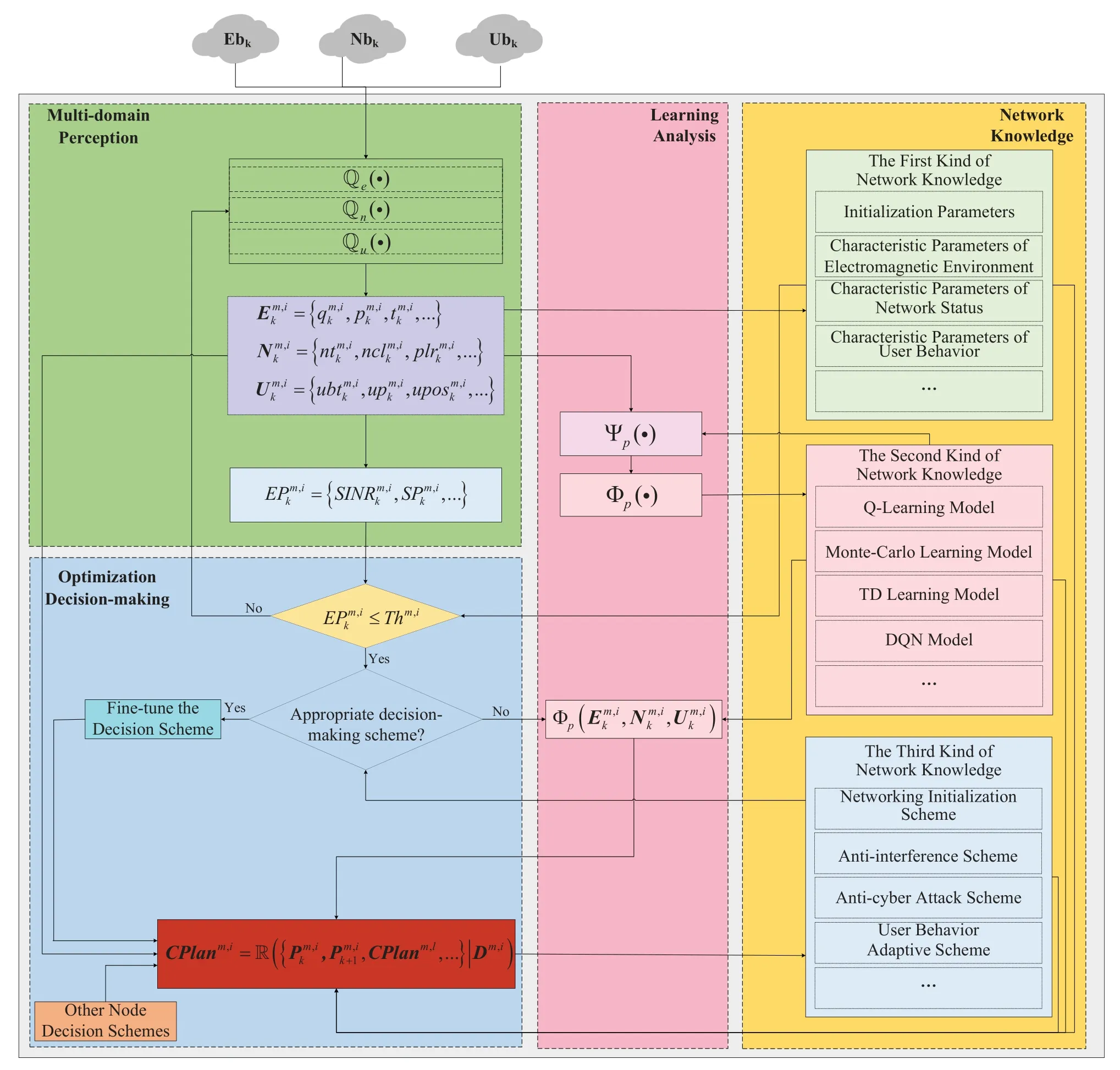
Figure 4.Operating mechanism of network cognition model.
where thedenotes the prediction of the multidomain environment.
The optimization decision-making unit invokes the appropriate decision-making method like the end-toend learning model or multi-objective optimization method from the network knowledge unit to generate optimal decision under the comprehensive network requirements.After the unified representation,the decision is stored as knowledge in the network knowledge unit.The generation of decision-making can be expressed as
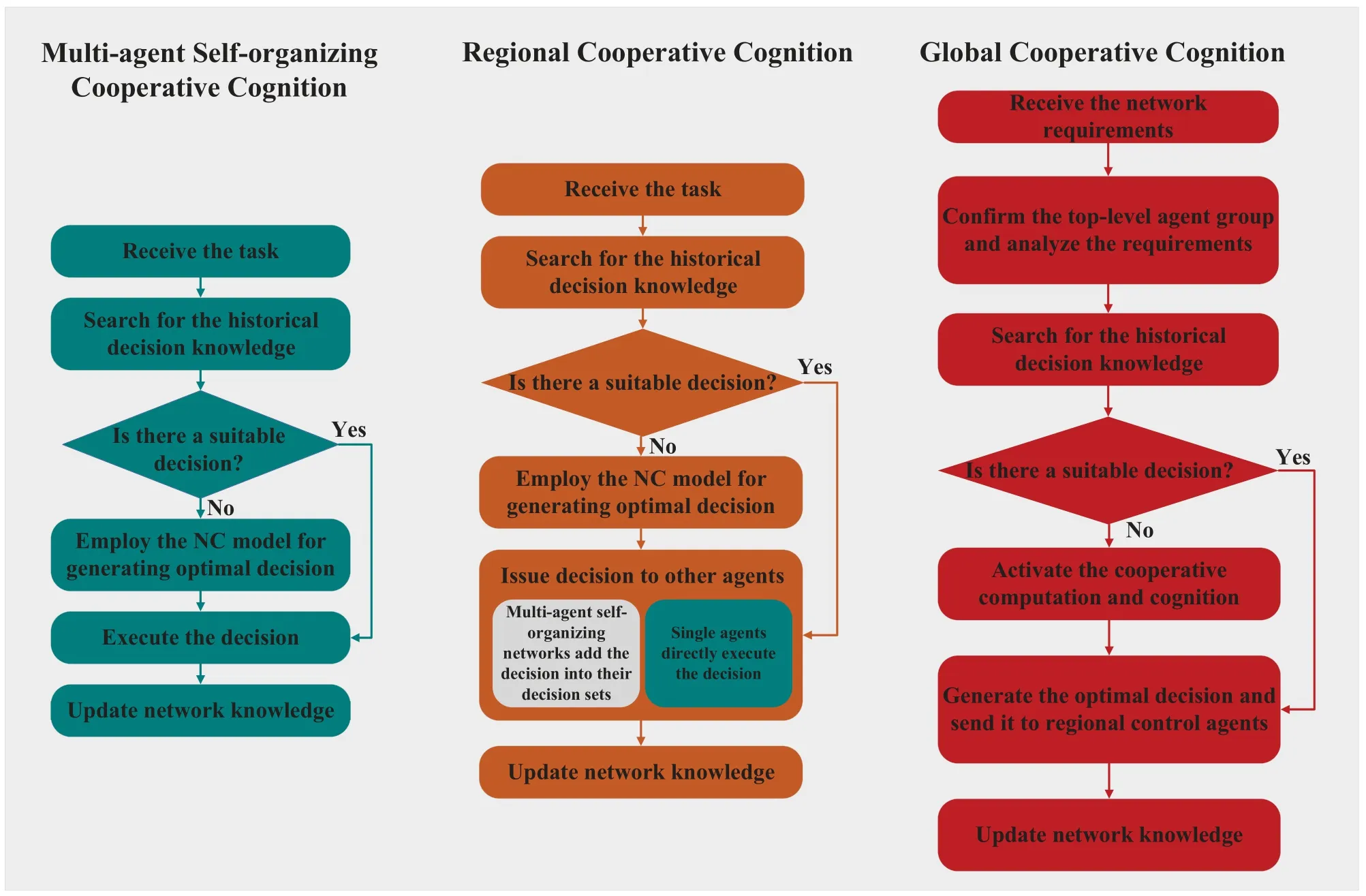
Figure 5.The process of cooperative cognition.
whereCP lanm,idenotes the comprehensive decision-making scheme generated by thei-th node of them-th level.CP lanm,lis the comprehensive decision from other nodes.Dm,imeans the network requirements.R(·) represents the decision-making method.
The IIN constructed by the network cognition model achieves the following functions:
1) Comprehensive multi-domain perception function.The multi-domain perception unit can fully perceive the multi-domain environment of the network and obtain the multi-domain features information to provide a solid foundation for the network to adapt to environmental changes.
2)Efficient learning analysis function.The learning analysis unit uses multi-domain feature information to train machine learning models.Then the appropriate models trained are selected to implement an efficient learning analysis function,providing technical support for the network to adapt to environmental changes.
3) Flexible information storage function.The network knowledge unit can store various network information which other units can invoke to implement their requirements,providing knowledge reserve for the network to adapt to environmental changes.
4) Well-performed optimization and decisionmaking function.Each network node embedding the network cognition model selects the best optimization method to generate the optimal decision-making scheme by using real-time and practical information.The decision-making schemes among the nodes can interact through broadcasting or other methods.Finally,the comprehensive scheme is merged to provide intelligent decision-making for the network to adapt to environmental changes.
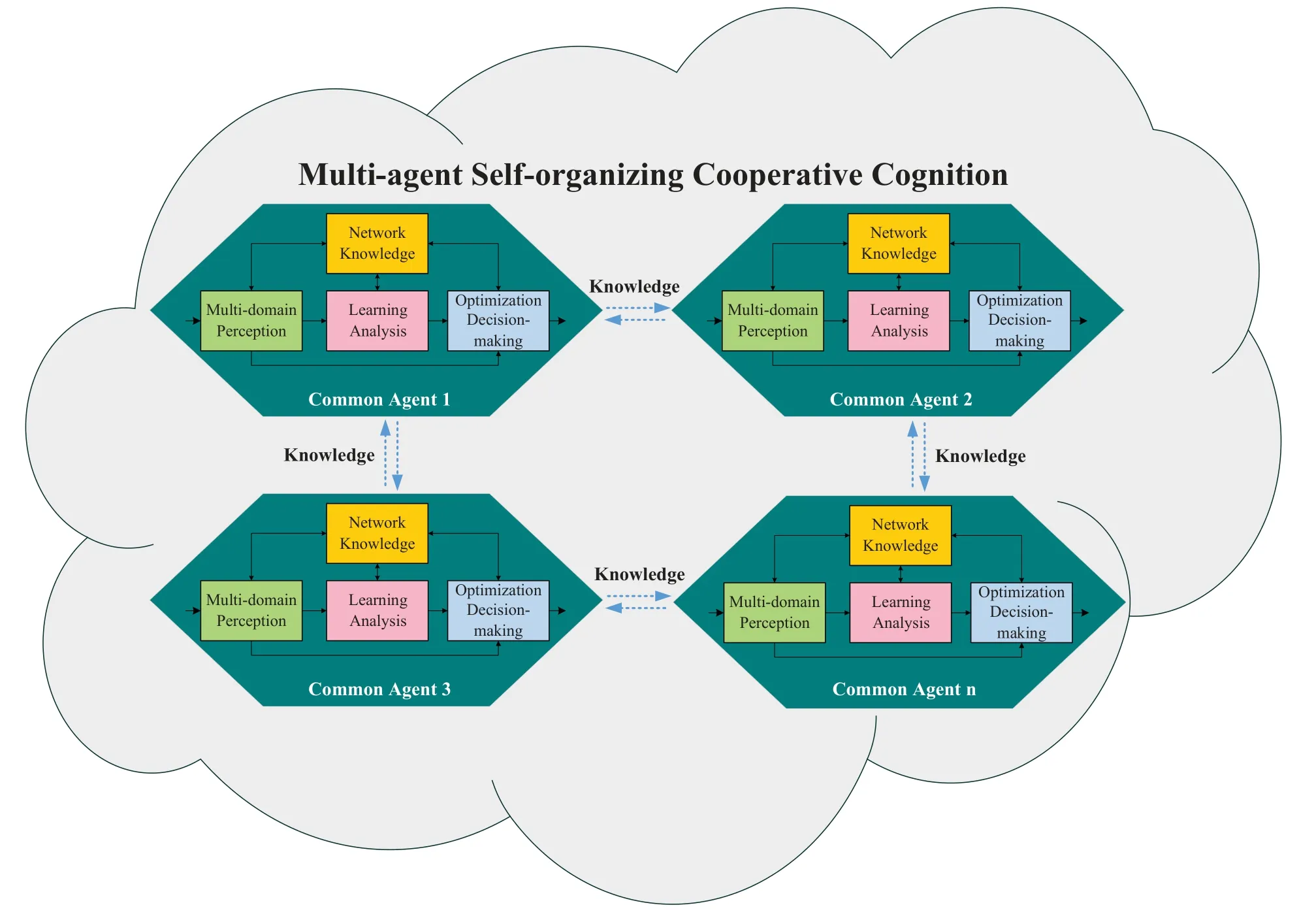
Figure 6.Multi-agent self-organizing cooperative cognition.
5)Convenient implementation application function.The network cognition model can be embedded as a module in the network nodes so that the network nodes can achieve cognitive capability.Hence,it is convenient for the network to empower intelligence to the newly added nodes.In this way,the autonomous capabilities of self-learning,self-optimization,and selfevolution aiming at the network’s overall performance can be implemented.
3.5 Application of Network Cognition Model
By embedding the NC model,network nodes can be intelligent agents,including common and control agents.Common agents mean terminal nodes with the NC model,while control agents add the function of controlling and managing other agents’actions based on the common agents.Under the guidance of the NC model,agents can implement multi-agent selforganizing,regional,and global cooperative cognition,whose processes are presented as follow (Figure 5-Figure 8).
Multi-agent self-organizing cooperative cognition is a small-scale application of the NC model,as shown in Figure 6.In multi-agent self-organizing cooperative cognition,common agents form a partial and noncentral distributed network with autonomous networking and operation ability based on NC.We take a common agent as an example to briefly present the multiagent self-organizing cooperative cognition.The current agent receives the requirements of networking or other tasks from other agents and searches for the network knowledge of historical decisions matching the needs.If a historical decision exists,the agent can directly execute the judgment.If not,the NC model embedded in the agent should generate effective decisions to satisfy the requirements.The multi-domain perception unit of the NC model collects the environmental information with which the learning analysis unit generates network knowledge.Subsequently,the network knowledge unit uses the correlation of the knowledge graph to produce the decision set.The optimization algorithm in the optimization decision-making unit selects the optimal decision from the set.Finally,the optimal decision is carried out to realize the networking or other tasks.Once the tasks are completed,all the information like the perceived data,learning model,and the optimal decision is stored as the network knowledge after representation.
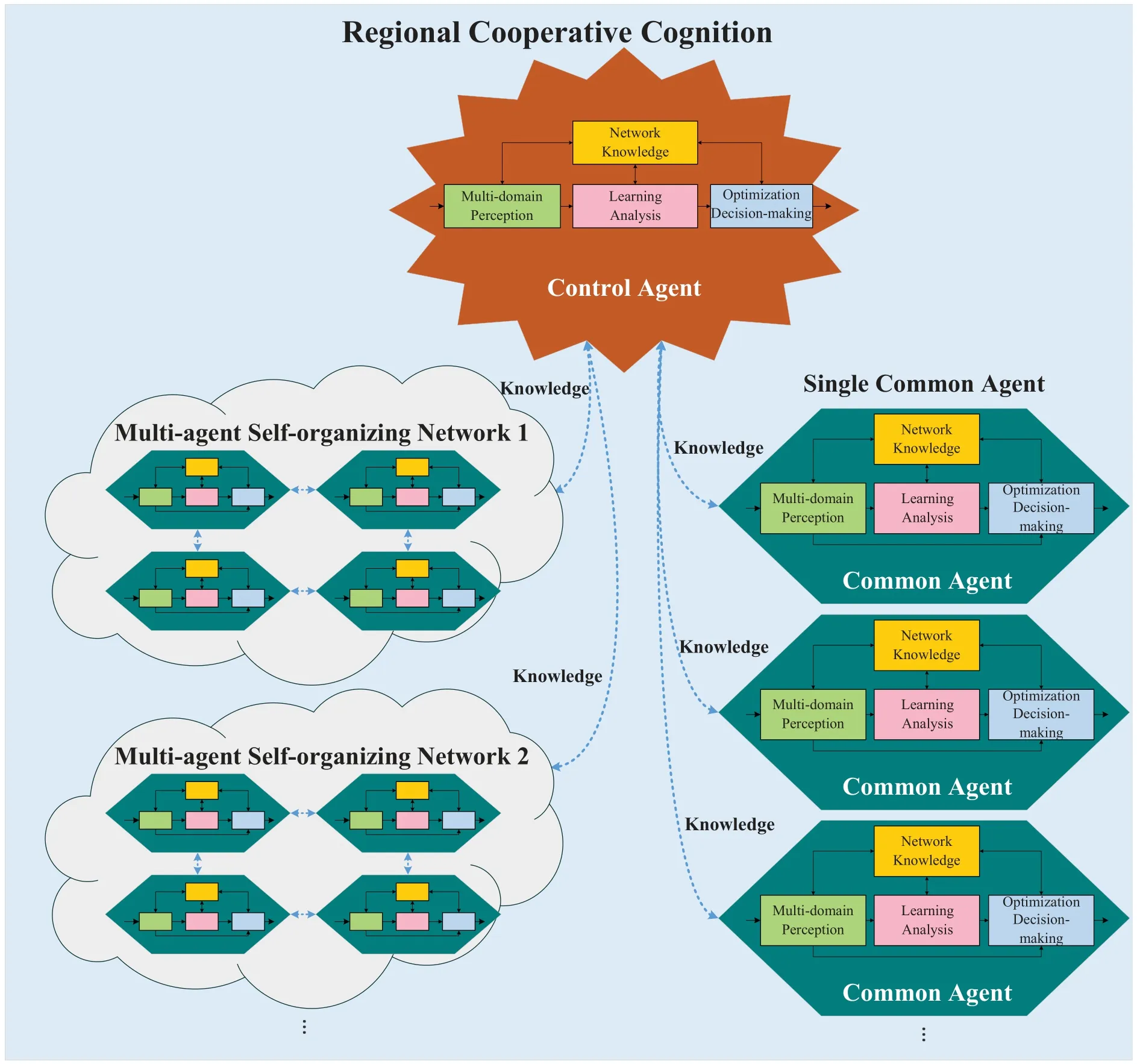
Figure 7.Regional cooperative cognition.
In regional cooperative cognition,the controlling agents and common agents form a local area network by the hierarchical and cascading method,as shown in Figure 7.The network’s regional cognitive center is a control agent whose missions are received from the superior control agent.We describe the regional cooperative cognition process under the NC model’s effect.The control center in the regional network receives instructions from the superior and checks whether the existing decision knowledge can directly solve the instructions.If not,the control center should apply the NC model for producing appropriate decisions.The sensors controlled by the center perceive the multi-domain environment to obtain valuable information.Simultaneously,the center also receives the perceived information and relative knowledge from other agents.The acquired data is stored as regional knowledge in the network knowledge unit and employed to generate a regional decision set.Finally,the optimization decision-making unit outputs the effective regional decision,which will be sent to other agents in the regional network.The agents receiving the decision include the single-agent and the multiagent self-organizing network.A single agent can directly execute the decision,while the multi-agent selforganizing network should add the decision into its decision set and choose the optimal result.The network knowledge is updated with the perceived information,learning model,and regional decision.

Figure 8.Global cooperative cognition.
Figure 8 shows that the global cooperative cognition is implemented by the centers of multiple regional cooperative cognitions divided into top-level and regional agent groups.The function of the regional agent group,formed by the centers of regional cooperative cognitions,is proposing different network requirements and executing the tasks.According to different requirements,satisfactory regional centers are selected from the regional agent group and form the top-level agent group.The top-level agent group can analyze the network requirements,complete the cognitive computation and issue the decisions to agents.The regional cognitive centers collect the network requirements based on which the top-level agent group is produced.The top-level agent group analyzes the requirements and searches for the existing decision in the network knowledge.If no historical decision can be applied directly,the top-level agent group will activate the collaborative computation and cognition.Any top-level agent sends a perceiving task to the regional centers and other top-level agents.Then the top-level agent analyzes the feedback information and generates the optimal decision.The optimal decision is transmitted to each regional center for satisfying the requirements.In addition,the network knowledge is also updated.
Next,we will analyze the similarities and differences between the abovementioned cooperative cognition and the state-of-the-art research.
The cognitive network proposed by Ryan W.Thomas could be centralized,distributed,and hybrid,consisting of cognitive elements [12].The cognitive elements were similar to software agents,which could be distributed in one or more network nodes to achieve local or network-wide goals.However,the cognitive network was goal-driven,and optimization goals needed to be designed in advance,which might result in the limitation of autonomous abilities.Moreover,there was a potential conflict between the control and observation because there was no integrated architecture.Much detailed environmental information might be lost if the cognitive network focused on management.Network nodes could not judge the rationality of received information due to the less interpretability of the interaction information.With the development of technology,some researchers are trying to improve these problems.In literature[15],a novel cognitive architecture was designed to manage the cognitive network.Due to introducing the knowledge base,the interpretability of decisions was improved to some extent.Nevertheless,this research focused on the environmental information of the physical layer and satisfying the goals of Quality of Service and Quality of Experience.The problems of the limitation of autonomous abilities and the potential conflict between control and observation were still existing.Cooperative communication based on swarm intelligence given in [60] had better autonomous perception,reasoning,and evolution abilities by applying cognitive radio technology.But there was little knowledge involved,resulting in the limitation of thinking ability.As a result,challenges in cognitive networks are difficult to balance.
The distributed cooperative cognition implemented by the proposed NC model can provide a new way to address the above problems.The cooperative cognition is similar to the cooperative communication based on swarm intelligence,but there are essential differences.The network knowledge in the common and control agents guides the process of cooperative cognition,improving the thinking capability.Moreover,the cooperative cognition of the network is not driven by end-to-end goals.The optimization tasks of the network can come from external settings but are more often generated autonomously by the regional central agents by analyzing the multi-domain information.The functions of control,decision-making,and perception are realized by different agents groups,which avoids potential conflict between control and observation.Besides,the knowledge graph brings the process of decision-making a solid logical correlation,and the information interacting among the agents is knowledge.Therefore,each agent can autonomously judge the rationality of received data.
IV.KEY TECHNOLOGIES OF NETWORK COGNITION
To guarantee the practical work of the NC model,the key technologies involved in each unit of the model are the research priorities.This section gives the essential functions of related technologies,providing the theoretical basis for their realization.The concrete application of these technologies will be carried out in the follow-up research.
4.1 Multi-Domain Perception and Data Processing
The electromagnetic environment domain mainly includes the electromagnetic spectrum information in space,time,frequency,and energy density in the multi-domain environment.The network status domain involves the network topology,the connectivity,the available resources,the transfer protocol,describing the internal situation of the network.The user behavior domain contains the description information of user behaviors such as the user type,the business preference,the user distribution,the priority.The composition of the multi-domain perception data is shown in Figure 9.
Multi-domain perception and data processing means perceiving the multi-domain environment for obtaining and processing the multi-domain feature data.Compared with the electromagnetic perception of the traditional cognitive methods,the perceptive range of the NC model is extended by adding the network status domain and user behavior domain,allowing the network to adapt to the environment changes more comprehensively.
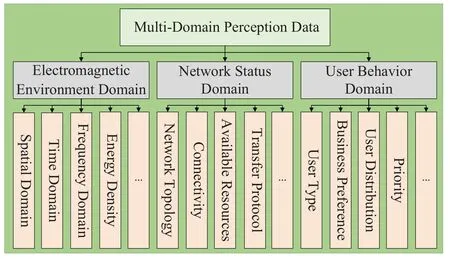
Figure 9.Composition of multi-domain environmental data.
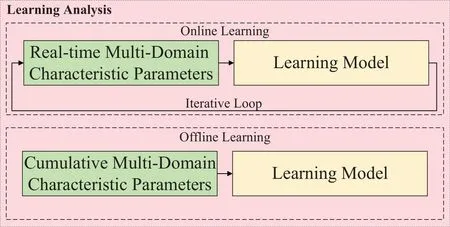
Figure 10.Learning analysis category.
The multi-domain perception data usually has largescale,multi-dimension,and high coupling properties,resulting in the inapplicability of the traditional perception technologies.Some new requirements are putting forward for perception technologies and data processing methods:
1)The joint perception function of the multi-domain data.Traditional sensing methods are mainly used for electromagnetic spectrum sensing like matched filtering,energy detection,and compressed sensing.Because a single perception method is maybe unable to obtain the complete multi-domain data,the joint perception technology needs to be developed.
2)The autonomous perception function of the largescale data.Due to the large-scale feature of the multidomain data and the demand to ensure timeliness,multi-domain sensing technology needs to sense massive multi-domain data in real-time automatically.
3)The unified representation function of the multidomain feature information.On account of the mutual influence of the internal and external environment,the massive multi-domain data obtained by joint and autonomous perception methods involves the feature information with high coupling and complexity.In order to guarantee transmission efficiency and convenient analysis,the feature information needs to be uniformly represented before being transmitted to other units.

Figure 11.The composition of network knowledge.
4.2 Multi-Domain Situation Information Learning Analysis
The multi-domain situation information refers to the information explicitly describing the comprehensive multi-domain environment of the network,including the current multi-domain environment information,the decision-making schemes,and the prediction information of the multi-domain environment.Thus,the multi-domain situation information focuses on the overall description of the multi-domain environment.In addition,the learning analysis of the multi-domain situation information means acquiring the multi-domain situation information with machine learning models.
The learning analysis process can be classified by online and offline learning,as shown in Figure 10.Online learning in the context of NC can iteratively train the machine learning models based on real-time data.Specifically,each time a set of multi-domain feature information is obtained,the learning models are trained once.Online learning aims to minimize the error of the entire learning analysis process and allow the machine learning models to adapt to environmental changes in time.However,abnormal data significantly impacts machine learning models in the online learning process.
In contrast,offline learning has better performance because plenty of the multi-domain feature information can be used to train the machine learning models.Nevertheless,the large-scale information makes the training time-consuming.The appropriate learning model should be selected flexibly according to the different demands of real-time performance and learning effect.For example,online learning should be selected if there is a strict requirement for real-time performance.Offline learning should be selected if there is a strict requirement for prediction accuracy.
In consideration of the network characteristics containing the uncertain data sources,the large-scale nodes,and the complex topology,the machine learning models should have the following functions:
1)The small-sample learning function in the dearth of multi-domain information.The number of training samples needed by the machine learning models may be insufficient.For example,the interference signals in an electromagnetic environment may be intermittent,but it is still necessary to determine whether the interference exists or not.Otherwise,the network performance may be badly affected by the interference.Nevertheless,the intermittent interference signals lead to the sparse training samples of the anti-interference learning model,reducing the effect of the learning models.Therefore,the machine learning models need to have a good learning effect when scarce training samples.
2)The learning transfer function from a single node to multi-node.The IIN usually contains large-scale nodes,and there may be situations where multiple nodes are located in a similar environment.In order to save network resources,the learning models need to satisfy the requirements of collaborative learning among multiple nodes.
3) The learning model selection function with the best adaptation to a multi-domain environment.Each learning model has the best working condition.In online learning,selecting a suitable trained learning model according to the multi-domain feature information and network performance requirements is necessary for the best learning efficiency.
4.3 Network Knowledge Construction and Application
The network knowledge is defined in Definition 4,specifically including initialization parameters,multidomain environmental feature information,multidomain situation information,learning models,decision schemes,interactive information,and expert knowledge,as shown in Figure 11.
Definition 4.Network knowledge refers to the multidimensional and polymorphic network information with a unified representation form.
Unlike traditional knowledge,network knowledge is closely related to the multi-domain environment of the network.The volume of network knowledge and the degree of internal coupling are directly proportional to the network’s running time and environmental complexity.In order to ensure the operational efficiency and resource utilization of the IIN,the construction and application of network knowledge must have the following functions:
1) The unified representation function of network knowledge.The amount of network knowledge acquired and generated autonomously is enormous.Besides,the coupling degree among knowledge is relatively high.The network knowledge should have the function of unified autonomous representation to facilitate the storage,distribution,and processing of knowledge.
2) The fast update function of massive knowledge.When the multi-domain environment of the network changes rapidly and dynamically,the real-time knowledge acquired by the perception methods needs to be continuously updated.If the environment change is gradually complicated,the volume of network knowledge will increase sharply.Hence,the network knowledge should update to guarantee timeliness and validity rapidly.
3) The autonomous generation function of offline network knowledge.In the offline state,the network needs to generate new knowledge by learning and analyzing the existing knowledge to reduce the pressure of real-time perception and learning.
4.4 Multi-Objective Optimization of Network Performance
The multi-objective optimization refers to the methods that can solve the overall optimization problems of network resources under the conditions of multiple attributes and constraints,including the user demand,the service quality,and the utilization efficiency of network resources.The methods can satisfy the users’requirements for the service quality,such as the information capacity,reliable transmission,timeliness,and improve the utilization efficiency of network resources as much as possible.When no appropriate machine learning model matches the current multidomain environment in the network knowledge unit,the optimization decision-making unit uses the multiobjective optimization methods to generate the optimal decisions.
The factors affecting the performance of multiobjective optimization are optimization indicators and optimization models.As the critical foundation for implementing multi-objective optimization,the optimization indicators are selected according to network performance requirements and dynamically adjusted to adapt to the changes of the multi-domain environment.To avoid the waste of network resources,the selection method of indicators needs to have the following functions:
1)The autonomous generation function of optimization indicators.In the IIN,it is essential to construct appropriate optimization indicators.For example,the upper-layer network performance indicators like service quality,resource utilization,and antiinterference performance can be added based on the multi-domain environmental parameters.The optimization indicators should be generated automatically based on the network knowledge,actively responding to the changes of the multi-domain environment and avoiding the waste of resources.
2) The node-level autonomous optimization function.The functions of network nodes are different.Some nodes only complete prescribed missions,while others need to implement complex functions like routing calculation and resource management.Hence,different nodes should select the appropriate indicators according to the functional requirements.
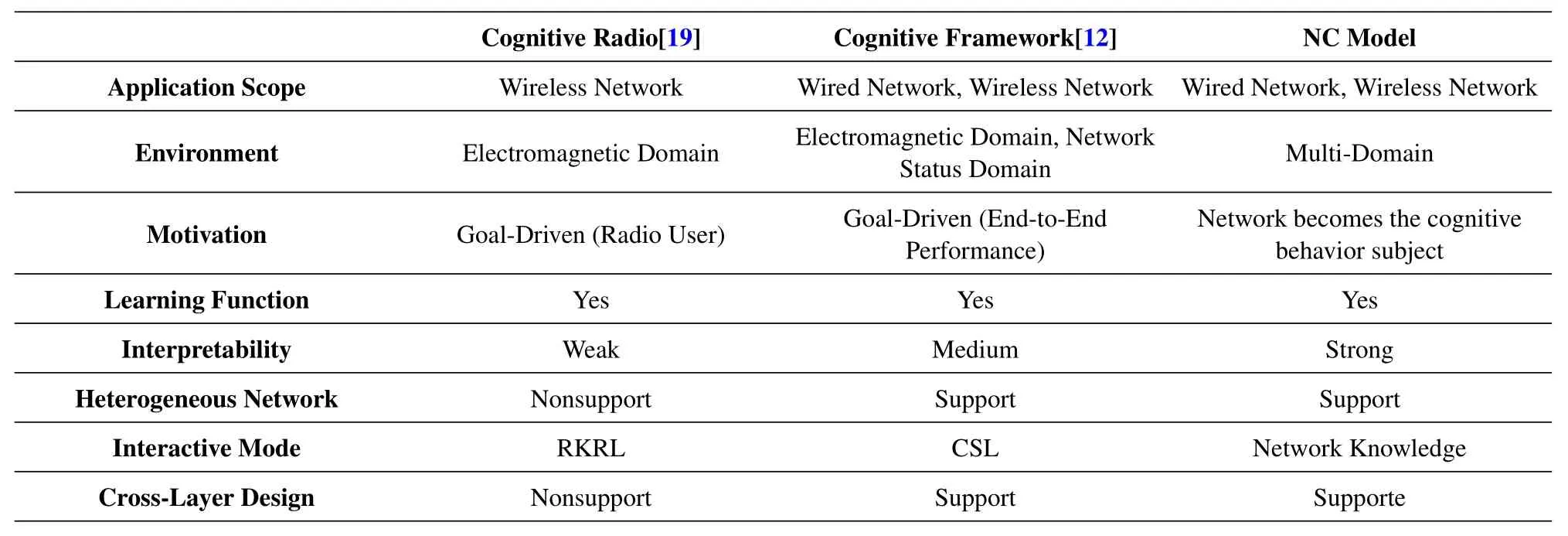
Table 2.The similarities and differences between classical cognitive theory methods and the NC model.
3) The network-level autonomous optimization function.Although each node selects the optimization indicators as needed to implement the nodelevel multi-objective optimization,ensuring the optimal performance of the entire network is indispensable.Therefore,the multi-objective optimization of each node needs to be performed on the premise that the network’s overall performance is optimal,making the network implement the network-level autonomous optimization.
V.COMPARISON
This section illustrates the similarities and differences between classical cognitive theory methods and the NC model,as shown in Table 2.We also present the highlights of the proposed NC model.
The Cognitive Radio Network(CRN)and Cognitive Network (CN) are classical applications of cognitive theory in the communication field.The implementation method of CRN is the cognitive radio proposed by Mitola.The cognitive radio adopts the Radio Knowledge Representation Language(RKRL)to support the cognition cycle for realizing the dynamic spectrum access and maximizing spectrum utilization.Thus,the radio users are the controlling goal of cognitive radio.Furthermore,the application scope of cognitive radio is limited to the wireless network.Due to the focus on the physical layer,the cognitive radio is not suitable for heterogeneous networks.In addition,the knowledge of cognitive radio is mainly reflected in RKRL,and there is little context-awareness.Despite adding a learning component to the cognitive cycle,the decisions generated by the cognitive radio are less interpretable.
Both CN and CRN are goal-driven,but CN aims for end-to-end network performance.As the implementation method of CN,the cognitive framework expands the scope of perceiving environment and application.The cognitive framework can obtain information about the electromagnetic environment and network status and be applied to construct wired networks and wireless networks.Therefore,it is suitable for the framework to complete the cross-layer missions and heterogeneous network.Besides,owing to the cognitive framework’s context-awareness,the decisions have better interpretability than the cognitive radio.
Different from the CRN and CN,IIN enables a new way of implementing an intelligent network,regarding the network as the cognitive behavior subject instead of being goal-driven.The proposed NC model is an approach to constructing IIN.The highlights of the NC model are in the areas of perceived environment,motivation,knowledge role,and interpretability.The NC model can sense the information of multi-domain environments like natural,electromagnetic,network status,and user behavior.By embedding the NC model,network nodes turn into intelligent agents among which the information interacts in the form of knowledge.Eventually,the motivation of taking the network as the cognitive behavior subject is realized.Moreover,the network knowledge based on the knowledge graph guides the actions of each unit in the NC model,which guarantees the strong interpretability of decisions.
VI.CONCLUSION
In this paper,we briefly overview the research status of IIN and redefine the IIN based on cognitive theory and AI technology.Focusing on implementing IIN,the concept and model of NC are innovatively proposed.Furthermore,we analyze the architecture,the operating mechanism,and the critical technologies of the NC model,a feasible modeling approach for constructing the core cognition theory based on the origin of the network.The NC model is expected to provide a new thought and method for implementing the“Network Intelligence+”by constructing the IIN.
This paper illustrates the preliminary idea and concept of the NC model.The related experimental verification will be in-depth research in the subsequent work.
ACKNOWLEDGEMENT
This work was supported by the China Postdoctoral Science Foundation(Grant No.2020M673687).
杂志排行
China Communications的其它文章
- Quality-Aware Massive Content Delivery in Digital Twin-Enabled Edge Networks
- Edge-Coordinated Energy-Efficient Video Analytics for Digital Twin in 6G
- Unpredictability of Digital Twin for Connected Vehicles
- Endogenous Security-Aware Resource Management for Digital Twin and 6G Edge Intelligence Integrated Smart Park
- Digital Twin-Assisted Knowledge Distillation Framework for Heterogeneous Federated Learning
- Design and Implementation of Secure and Reliable Information Interaction Architecture for Digital Twins
